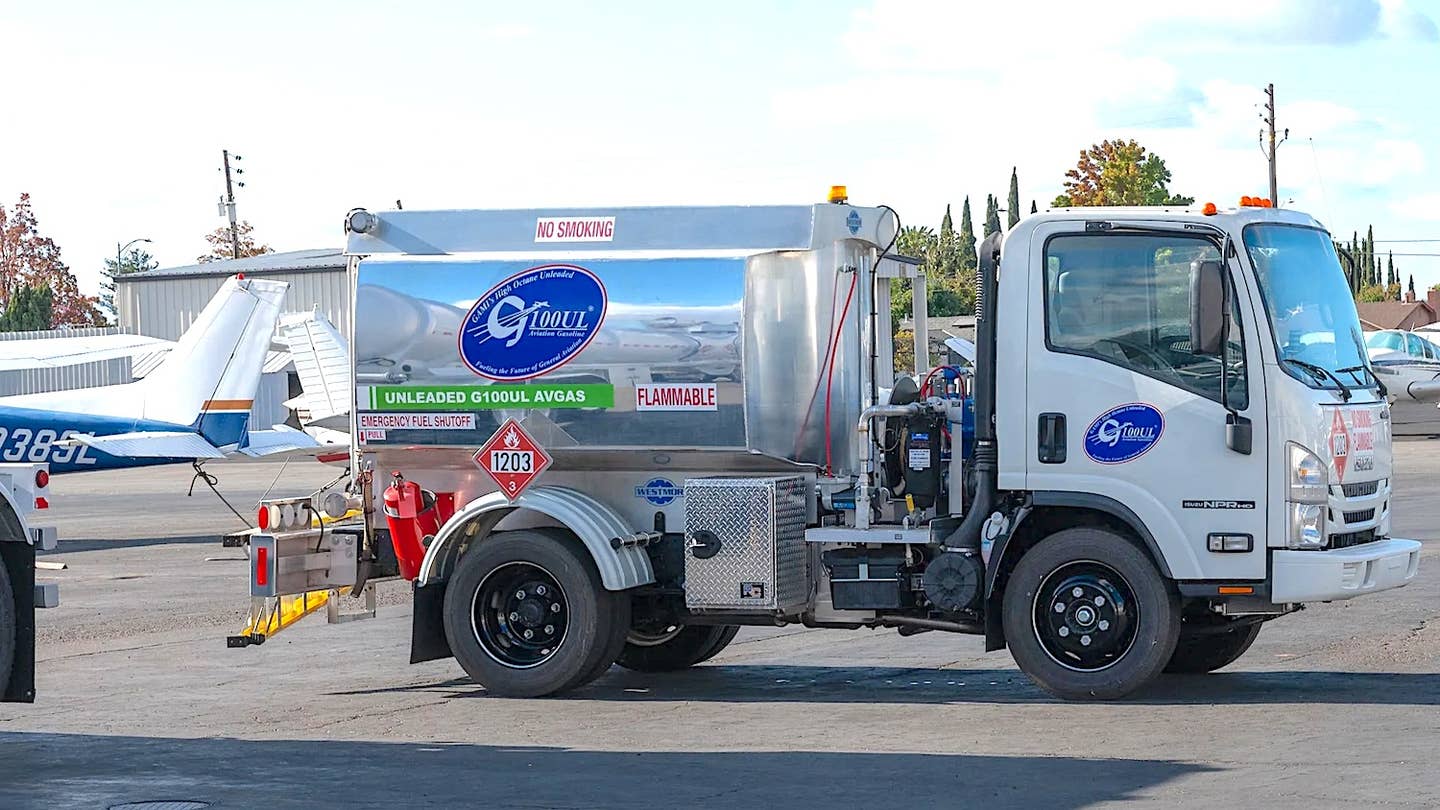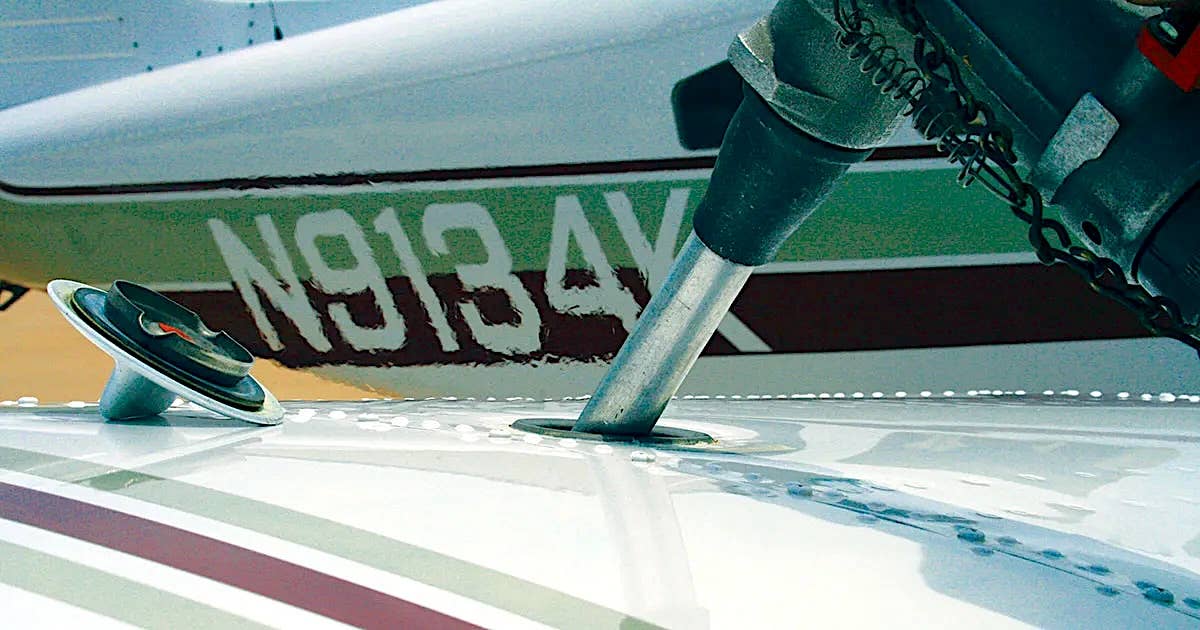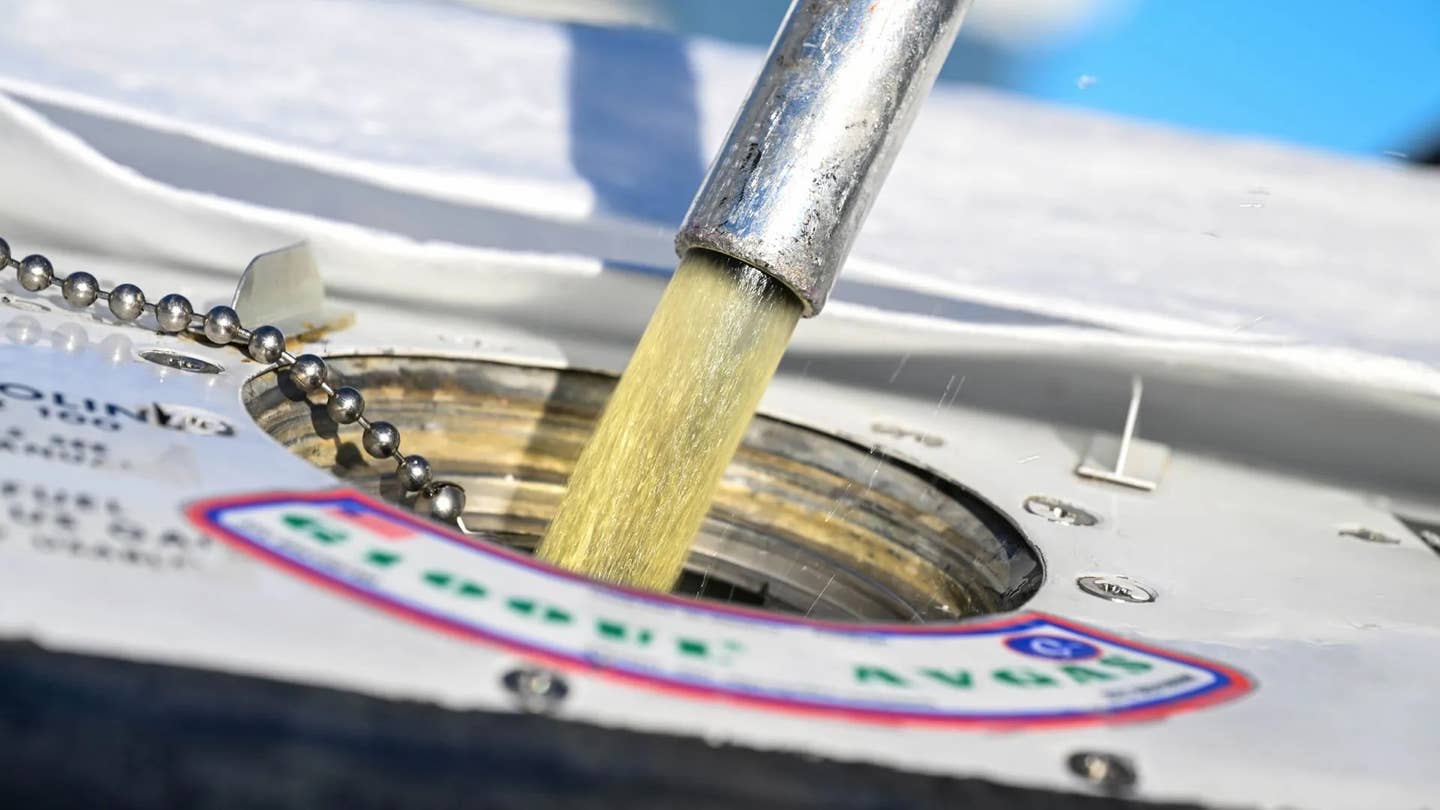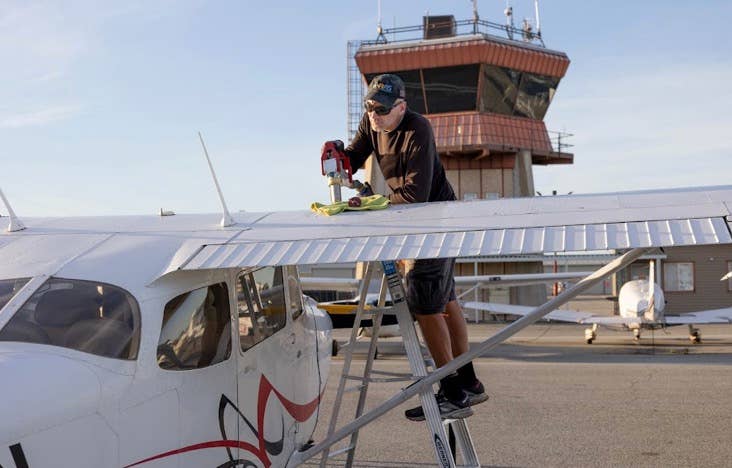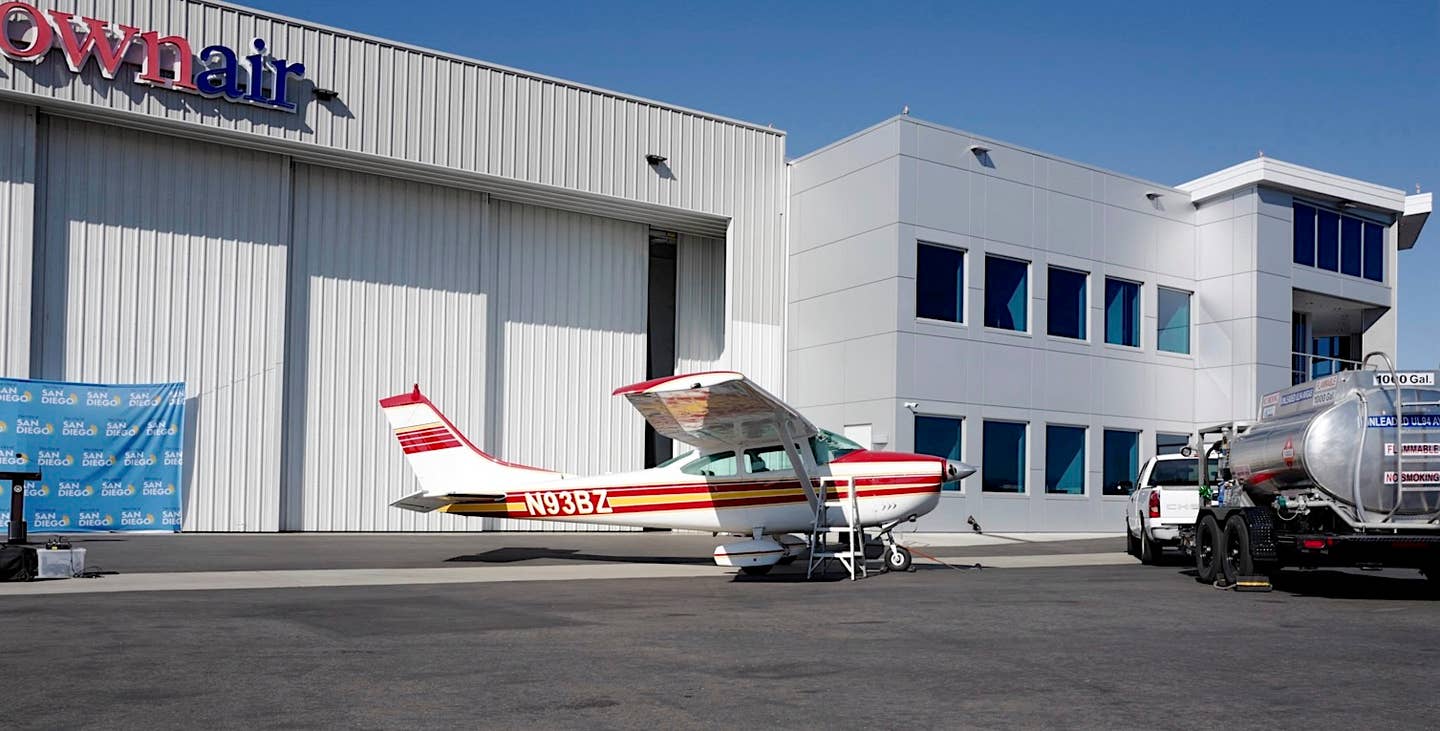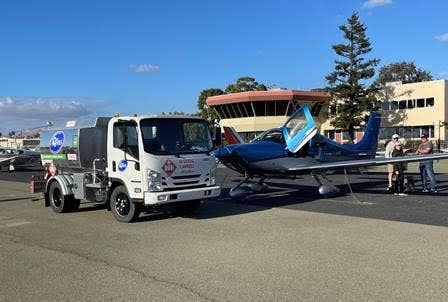AvGas vs. AutoGas
Wanna start an argument among other aircraft owners where passion will ring louder than logic? Either bring up lean-of-peak mixture settings or ask whether you should use autogas in your engine. John Ruley dissects the issues of autogas and introduces research (and problems) that didn’t exist only a few decades ago.
Editor's Note: This article originally appeared in Cessna Owner and Pipers Magazines.
Of all the hangar talk one encounters at airports, the subject of using automotive gasoline in airplane engines is among the most contentious. Some -- particularly owners who have an autogas supplemental type certificate (STC) -- will tell you that it's perfectly safe, and even better for an aircraft engine than running 100LL. Others -- usually pilots who haven't run autogas -- say, "I'll never run that crap in my engine," listing a range of potential problems from vapor lock to deteriorating gaskets.Look to the experts, and you'll find a similar range of opinions. The engine manufacturers are unanimous that auto fuel should not be used in engines originally certificated for avgas. Indeed, Teledyne Continental Motors (TCM) explicitly states that using autogas voids their warranty on new engines and parts. On the other hand, the Experimental Aircraft Association (EAA) and Petersen Aviation -- who issue the necessary STCs -- say that it's perfectly safe. The FAA -- which approves the STCs -- mostly seems to agree, though it continues to prohibit the use of autogas for Part 135 operators while carrying passengers for hire. (Read the rules about using autogas in an Adobe PDF document on the FAA's Web site.) The FAA also wrote a letter a few years ago contradicting some of the claims of the engine manufacturers.What's the real story? In short, for normally-aspirated (non-turbocharged), low-compression engines originally designed for 80 octane aviation gas, autogas is a perfectly viable option that can save considerable money and -- despite what the engine manufacturers say -- won't hurt your engine. That said, there are down sides. To fully understand the issues involved, we'll need to discuss a bit of petrochemistry.
Octane and Heptane
Gasoline is a mix of liquid hydrocarbons -- that is, chemical molecules that contain hydrogen and carbon atoms. The simplest such molecules, methane and ethane, have just one or two carbon atoms respectively, and are gases. The two hydrocarbons of most significance for gasoline are heptane, which has seven carbon atoms, and octane, which has eight. Both are liquids at room temperature. "Straight-run" gasoline -- directly as it comes out of a petroleum distillation plant -- consists of 62-64% octane, and the rest heptane. It's said to have an Octane Rating of 62-64.The octane rating is significant because octane can withstand much higher compression than heptane, and high compression increases power. So to get reasonable power from a lightweight engine for aircraft use, aviation gasolines have an octane rating of 80 or higher.The octane rating can be increased beyond the simple proportion of octane to heptane by adding anti-knock agents, which delay the onset of detonation. Until recently, the most important such additive, for both automotive and aviation use, was tetra-ethyl lead (TEL). It's found in aviation fuels in the following proportions:
| Fuel Grade (Octane Rating) | Color | TEL per Gallon |
| 80/87 | Red | 0.5 mL |
| 100LL | Blue | 1.2 - 2.0 mL |
| 100/130 | Green | 3.0 - 4.0 mL |
| 115/145 | Purple | 4.6 mL |
| Source: "Maintaining and Overhauling Lycoming Engines (2ed) by Joe Christy, 1986, TAB Books, Blue Ridge Summit, Pa. | ||
In the U.S., only the first two grades (80/87 and 100LL) are widely available, though 100/130 remains common overseas. The first grade, 80/87 octane, is basically comparable to pre-1986 "regular" leaded automotive gas, at least as far as TEL content is concerned. Of course, modern auto gas has no TEL; instead a manganese-based antiknock agent is used, along with a sophisticated reforming process to increase the base octane number of the feed stock. (Read more about aviation gasoline and the octane rating system here.)
Your Engine Matters
A large proportion of low-compression aircraft engines from both Lycoming and Continental were originally certificated for operation on 80/87 octane aviation gas. Most Lycoming O-235, O-290 and O-320 engines fall in this category, and so do some of the larger O-360 and O-540 engines. Most Continental O-200, O-300 and O-470 engines, and some of the fuel-injected IO-470 and IO-520 engines can run it as well.So, if you have a low-compression engine, can you just fill it up with autogas and take off? Nope, you've got to get an appropriate STC -- and despite what you may have heard elsewhere, it is very important to get that STC, even though it usually will consist of one or two pieces of paper, plus new decals for your fuel ports.Why is the STC important? While unleaded autogas provides sufficient octane to substitute for 80/87 avgas in low-compression engines, there are other differences that can cause problems when using autogas in some engine installations. The two most significant are lower vapor pressure -- which can lead to vapor lock -- and incompatibility between some of the additives in autogas and some components (particularly seals) in some aircraft fuel systems.In order to qualify for an STC, a particular airframe/engine combination has to be rigorously tested, to include either a 150 hour engine endurance test or 500 hour flight test, under controlled conditions. The tests also include checking operation at high ambient temperatures, which can create vapor lock. Some aircraft don't pass -- the Piper Apache and Comanche-250, and Cessna Skyhawk with Avcon's 180HP conversion all failed testing, and cannot legally run autogas.In a nutshell, by buying the STC you are paying for a bunch of research and testing to verify that it really is safe to use autogas in the airframe/engine combination you have. In a few cases, you may be required to have modifications made or the STC may authorize only premium (91 octane or higher) autogas. For example, Petersen Aviation's STC for Piper PA-28-160, -161, -180, and -181 models requires replacing the electric boost pump and running premium gas.
Problems Can Occur
The testing cannot, of course, guarantee that you won't have problems. Vapor lock is a real issue when using autogas in aircraft engines, particularly at high altitudes on hot days -- after all, it's made for use at sea level, or at most lower altitudes. Cars don't get up into the flight levels! One way to combat this is to make sure that the autogas you use is fresh (don't fill the airplane up and then leave it in the hangar for a month). Another is to use a Hodges Volatility Tester to assure that the fuel in question won't cause vapor lock at the current ambient temperature. It's available from Petersen Aviation.The engine manufacturers, in their comments on autogas (read one from Lycoming and one from TCM) also raise a potentially legitimate concern about variable quality of automotive fuels. Avgas, after all, is federally regulated and subject to a nationwide standard; provided it isn't contaminated, you can be reasonably sure that you're getting pretty much the same thing out of any 100LL pump in the U.S. Autogas is a completely different matter -- it's regulated differently from state to state and in some cases may have radically different formulations. Here in California, for example, there's a move to eliminate MTBE (an oxygenating agent used to promote clean burning) and replace it with methanol. The trouble with that, in aviation use, is that methanol can mix with water, leading to a potentially disastrous situation if you get water in your fuel tanks.How can you deal with this? If you're going to run autogas, make sure you buy it from a legitimate supplier -- don't try to save that last few cents per gallon buying from the cheapest place in town. The best place to get it, of course, is from an on-airport pump at an FBO that offers autogas.
Where To Get The Good Stuff
Which leads to one final issue -- a very practical one. It can be hard to buy autogas at many airports. If I may be allowed to give a personal example: The first airplane I owned had a Lycoming O-320 engine, and came with an autogas STC. I checked around and was delighted to find that autogas was available from the self-service pump at my home airport (Modesto, Calif.), and after checking with other pilots on the field, figured it was at least worth a try. Like many pilots giving autogas a shot for the first time, I planned to run it only in one tank, and keep a tank of 100LL available in case of problems. When I checked the pump out, though, I found that it was equipped with a short hose that wouldn't reach far enough to fill my airplane. When I asked about this, I was told that the short hose was a deliberate move by the FBO to prevent pilots from pumping autogas directly into their airplanes, though I was also told that "if you want to pump it into your own container, and then put it in your airplane, that's your business."Now that gave me pause. If I were bloody-minded enough, I could have bought a couple of jerry-cans, but that would have been a pain in the neck. At least one local pilot -- Richard Bettencourt, who owns a 1955 Cessna 180 -- got around this problem by mounting an external gas tank and hose on his pickup truck. He swears by autogas -- saying he's had better results running it than running either 100LL or 80/87 avgas (which isn't available in Modesto but can be had nearby). I could have done the same thing, but that would have involved a lot of extra expense.
Your Choice May Not Be My Choice
I wound up following the line of least resistance and stuck to 100LL while I owned that airplane. In about a year I traded up to a bigger airplane with a higher-compression engine that required 100LL. Since then, a group of local pilots have petitioned the FBO, which responded with a longer hose that can be used to pump autogas directly into airplanes -- but to use it, you have to establish an account with the FBO, and show them your STC. Checking around, I've found similar situations at the few airports in the area that have autogas available on-field. For example, the Stanford Flying Club at Palo Alto Airport has autogas -- but it's only available to SFC members.Still, if I were flying an airplane with a low-compression engine today, I'd be running autogas in it. Over the year-and-a-half that I ran 100LL (and later, 100/130 octane, when I started flying volunteer missions into Mexico) in that O-320, I had repeated spark-plug fouling problems that were a direct result of running the engine on fuel with four times the lead content it was designed for. And I wasted a lot of unnecessary money paying for all that lead I didn't need.How much money? Rich Rosa, a contract Air Traffic Controller who flies a PA-20/22 Pacer conversion with the same engine as my first airplane, runs autogas. He pays about one dollar a gallon less for it than I pay for 100LL. The engine burns about 9 gallons/hr in cruise. Over the 2000 hour TBO of that engine, Rich will save $18,000 -- enough to pay for an overhaul, when the time comes!

